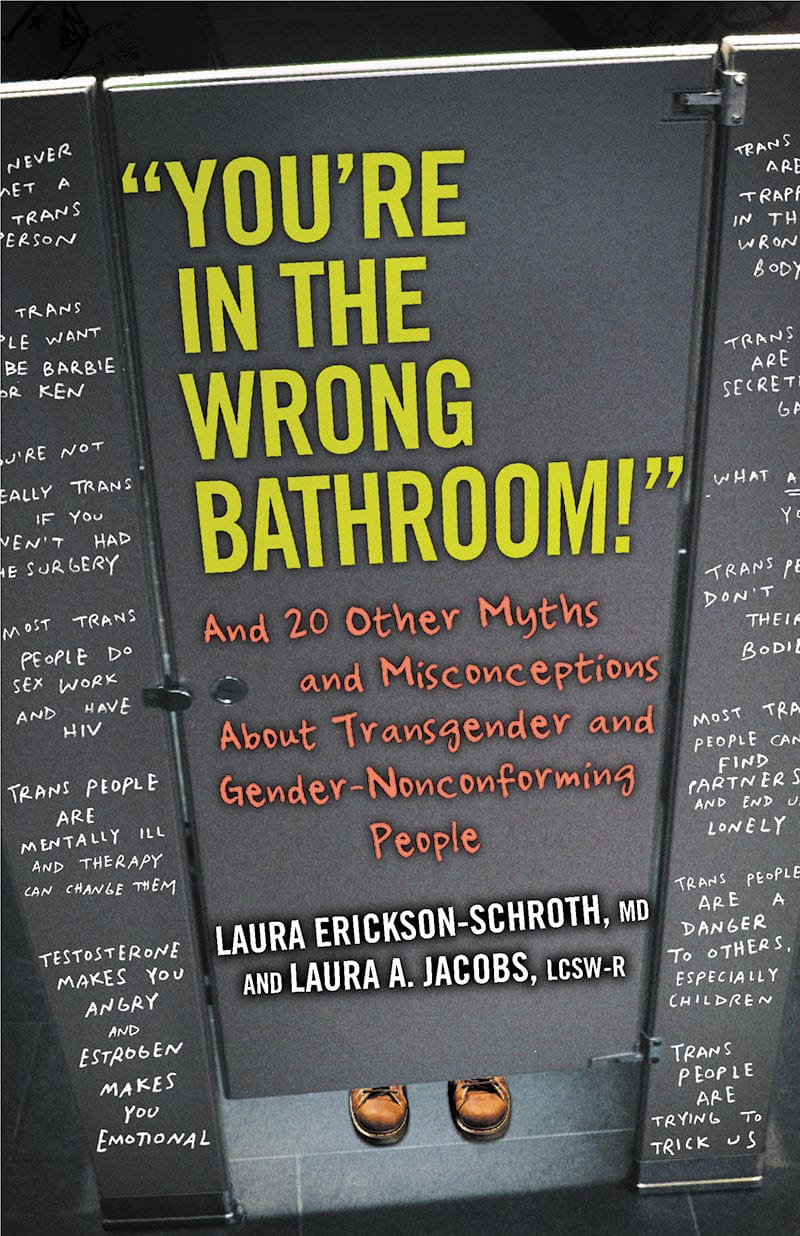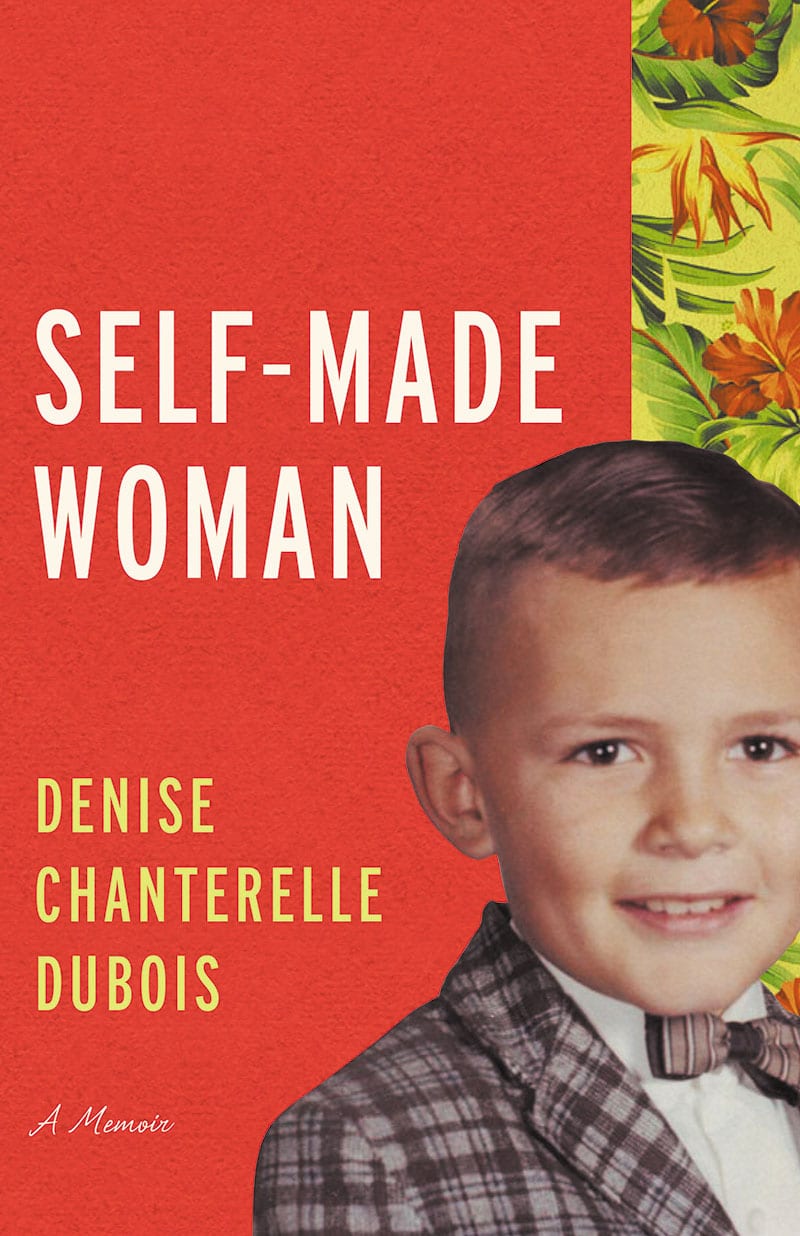Books about gender identity to peruse around the fireplace
 “You’re in the Wrong Bathroom!” And 20 Other Myths and Misconceptions About Transgender and Gender-Nonconforming People by Laura Erickson-Schroth, M.D. and Laura A. Jacobs, LCSW-R (Beacon Press 2017) $16; 182 pp.
“You’re in the Wrong Bathroom!” And 20 Other Myths and Misconceptions About Transgender and Gender-Nonconforming People by Laura Erickson-Schroth, M.D. and Laura A. Jacobs, LCSW-R (Beacon Press 2017) $16; 182 pp.
One million. That’s approximately how many transgender people live in the U.S. Chances are, even within the gay community, you’ve met someone who is trans and you didn’t even realize it.
But trans people have been around for centuries and were once revered in various cultures. They are not “broken” or “trapped in the wrong body” and they do not need to be “fixed.” They’ve gone through many steps to transition, and the vast majority will not regret it. And using “safety” as an argument for denying them bathroom usage is incorrect — unless you’re talking “safety” for the trans individual zierself.
The sexuality of a trans person may be complex, or it may be a fluid process filled with surprises, but transitioning isn’t a way to “trick” anyone into anything. Disclosure to friends, family and potential mates is likewise not easily defined, so it’s best left to the individual. Obviously, none of this is “easy.”
Questions. You’ve got a zillion of them and, especially if you’re transitioning or thinking about it, so do your friends and family. You’re in the Wrong Bathroom!” can answer 20 of them.
It’s a myth to believe that any single thing can define a trans person, write authors Laura Erickson-Schroth and Laura A. Jacobs. Each individual decides on who they are or will be, what they’ll be called, whether to have surgery, how they’ll dress. And no, you cannot ask what’s in their pants, but you can respectfully inquire about preferred pronouns.
Beginning at the basics with “Identity,” the authors take the most common lore about the “T” in LGBT and gently correct any wrong beliefs that may be lurking in readers’ minds. That’s a good start, but there were times when the authors seemed too nice; more adamant language could have been appropriate. Even so, there’s a good sense of mind-easing in most cases here, followed by a carefully-measured MYOB tone. At some point, then, the book transitions (no pun intended) more toward gender-nonconforming readers and less for cisgender folks, allowing the latter even better insight.
There’s a lot of education as well as food for thought inside this book, for those who’ve transitioned as well as those who are pondering it and for their loved ones. If you need something to help set the naysayers right, this book will work.
 True Sex: The Lives of Trans Men at the Turn of the 20th Century by Emily Skidmore (New York University Press 2017) $27; 253 pp.
True Sex: The Lives of Trans Men at the Turn of the 20th Century by Emily Skidmore (New York University Press 2017) $27; 253 pp.
In 1902, women in the United States could not vote legally. Many couldn’t hold property or get credit, and joining the military was forbidden. None of that was a concern to Harry Gorman, though: well-traveled, adventuresome, and married, Gorman lived in Buffalo, N.Y., where he was known as a good man.
Except he wasn’t. Anatomically, Gorman was a woman.
Surely, that came as a surprise to doctors, jailers, and undertakers who discovered the secrets of Gorman and men like him, but in this book, Emily Skidmore says that the opposite is true of everyday folks: As evidenced by articles in many small-town newspapers, locals often knew the “true sex” of trans men in their midst and didn’t seem to much care.
Many trans men in the late 1800s and early 1900s, says Skidmore, married, perhaps to cement their appearance as “‘good men’ to their communities.” Once discovered, they were often known in the press as “female husbands” because the term “lesbians” hadn’t taken hold yet and, at that time, women were largely believed to be asexual or unable to be passionate. Even so, though titillated, small-town Americans then weren’t quite as naïve as we might think they were.

True Sex author Emily Skidmore.
Perhaps because the science of sexology was still in its infancy and words were lacking, many of the men explained their actions as a way to make a living, or because it was more comfortable to dress and live as a man. Some didn’t explain at all, while others said they lived as men to take advantage of the rights men had, and continued in order to avoid embarrassment for their new wives. In many cases that Skidmore found, those reasons were no matter to neighbors. But intolerance was never far away.
When one considers the attitudes toward LGBT individuals, pre-Stonewall, it’s eye-opening to know that tolerance was practiced well before discrimination was. It gives you more respect for your elders — and yet, as you’ll see in True Sex” laissez faire attitudes weren’t widespread.
Using the tales of many trans men, as garnered from newspaper accounts of the day, Skidmore shows how small-town residents around the turn of the last century viewed trans men and, at the same time, women who loved women. Not only are those stories fascinating, but they contain a certain quaintness that belies what’s between the lines: The newspapers had a lot to say, but there was an equal amount that they didn’t say that readers, Skidmore believes, surely implicitly understood.
This book veers off into the scholarly now and then; even so, it’s readable by anyone who’s interested in this history. If that’s you, True Sex is a book you’ll want for yourself.
 Self-Made Woman: A Memoir by Denise Chanterelle DuBois (University of Wisconsin Press 2017) $27; 224
Self-Made Woman: A Memoir by Denise Chanterelle DuBois (University of Wisconsin Press 2017) $27; 224
pp.
It began near a lakeside cabin in Wisconsin. A curious little boy of 4 loved the water, until he fell in and nearly drowned. Once fished out, he was dressed in girl’s clothing while his dried.
He was enchanted. He fought his mother’s demands that he give the clothing up. That was the beginning of Denise Chanterelle DuBois’ lifetime journey toward womanhood.
Though his parents were both abusive alcoholics, Catholic school nuns were the ones who showed DuBois that sexual stimulation could come from humiliation. In grade school, he preferred playing with girls because he identified as a girl himself, but teachers forbade it. When embarrassed in class, he felt stirrings; he asked playmates to spank him, and he learned to welcome negative attention.
This led to petty theft and a secret life: DuBois began sneaking into his sister’s closet to wear her clothing. He broke into random buildings to steal panties from strangers, and he lost a babysitting job when his client’s child caught him wearing his client’s lingerie; the ensuing humiliation only enhanced the experience. He dabbled in domination by being a slave to women who wanted his money. He experimented with drugs and alcohol; there were run-ins with the law. He became suicidal.
And yet there were bright moments in his life. DuBois fell in love with a woman who went along with fetishes that had grown into full-blown obsessions. He made friends — albeit the kind who were into drugs. He got married. And he started learning what it would take to be the woman he always knew he really was.
Self-Made Woman is a lot of things. It’s sad. Poignant. Scary. It’s also TMI sometimes and, at just over 200 pages, it’s a bit too long.
From a Wisconsin boyhood to womanhood in Bangkok, DuBois tells readers of a multi-city, lifetime self-search, in an account that feels overly detailed … and overstuffed. Unabashed details about the world of submission and female domination may be titillating for those who share DuBois’ fetishes, but cruelty and graphicness make them wince-worthy to others. Add in memories of drug and alcohol abuse and an account of imprisonment that seemed rushed and you could have a mess of unreadablility, were it not for the overall uniqueness, vulnerability and the truthfulness in this tale.
When the story itself lags, those are the things that redeem it. They’re what make this matter-of-factly-told memoir one that sets itself apart by its brutal honesty. It’s what will make you want to put Self-Made Woman in your hands.
— Terri Schlichenmeyer










